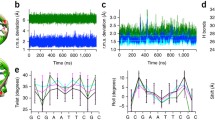
Overview
Part of the book series: Lecture Notes in Computer Science (LNCS, volume 4848)
Part of the book sub series: Theoretical Computer Science and General Issues (LNTCS)
Included in the following conference series:
Conference proceedings info: DNA 2007.
Buy print copy
About this book
Similar content being viewed by others
Keywords
Table of contents (30 papers)
-
Novel Techniques for DNA Computing in vitro
-
Novel Techniques for DNA Computing in silico
-
Back Matter
Other volumes
-
DNA Computing
Bibliographic Information
Book Title: DNA Computing
Book Subtitle: 13th International Meeting on DNA Computing, DNA13, Memphis, TN, USA, June 4-8, 2007, Revised Selected Papers
Editors: Max H. Garzon, Hao Yan
Series Title: Lecture Notes in Computer Science
DOI: https://doi.org/10.1007/978-3-540-77962-9
Publisher: Springer Berlin, Heidelberg
eBook Packages: Computer Science, Computer Science (R0)
Copyright Information: Springer-Verlag Berlin Heidelberg 2008
Softcover ISBN: 978-3-540-77961-2Published: 08 February 2008
eBook ISBN: 978-3-540-77962-9Published: 09 February 2008
Series ISSN: 0302-9743
Series E-ISSN: 1611-3349
Edition Number: 1
Number of Pages: XI, 292
Topics: Computation by Abstract Devices, Algorithm Analysis and Problem Complexity, Computational Biology/Bioinformatics, Artificial Intelligence



